In part 1 of this blog series, we considered two overarching types of scaffolds that support English language learners:
- Verbal Scaffolds use language to support students during instruction
- Procedural Scaffolds are tools and resources to support students as they access the learning
Collaborative Literacy includes a multitude of scaffolds embedded in the lessons that support the teacher in planning for instruction. The goal of these scaffolds is to make the academic content comprehensible while promoting the students’ English language development. Here are just a few examples of ways these scaffolds support teacher planning and student learning.
Verbal Scaffolds
This type of scaffold provides prompts, questions, and elaboration to facilitate students’ movement to higher levels of language proficiency, comprehension, and thinking. The combination of the verbal scaffolds with effective teacher-student interaction promotes confidence, which in turn leads to language competence. Both Being a Reader and Being a Writer consistently embed verbal scaffolds in the daily lessons. Here are examples of the types of scaffolds with brief explanations.
“You might say:” note
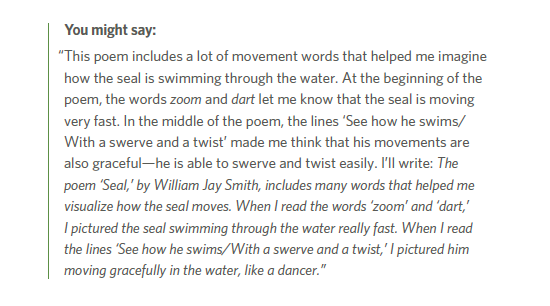
This verbal scaffold invites the teacher to model a “think-aloud.” In this example, the think-aloud includes modeling writing. After the teacher walks the students through his or her thinking, the students engage in similar thinking and discussion.
Reinforcing contextualized definitions
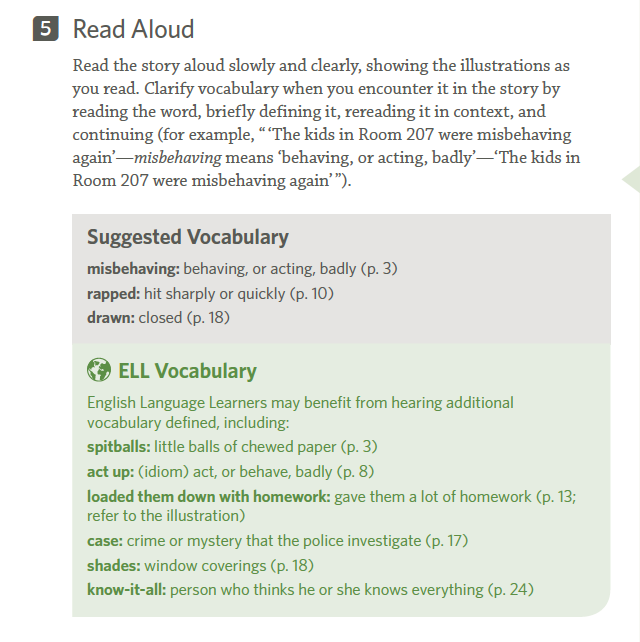
The rigor of the tasks that Collaborative Literacy students engage in increase across the weeks and days of instruction. For this reason, it is imperative that students have a solid understanding of the text. Specific ELL vocabulary suggestions reduce some of the cognitive load for ELL students giving them immediate access to the read-a-loud text. Vocabulary words are defined in the context of the read-aloud in a way that minimizes impact on the flow and pacing of the instruction. This support ensures that students are able to engage in meaningful conversations about the text.
Procedural Scaffolds
Procedural scaffolds make content comprehensible by providing tools, resources, and other types of support before, during, and after instruction. Students need access to the content of the text, but it is equally important that students feel safe enough to take academic risks as they collaborate within a classroom community even when they make mistakes. The combination of this low-affective-filter environment and these scaffolds accelerate students’ learning and acquisition of language. Here are some examples of procedural scaffolds within Collaborative Literacy lessons that support both academic and social goals in support of language acquisition.
Asking open-ended questions with support
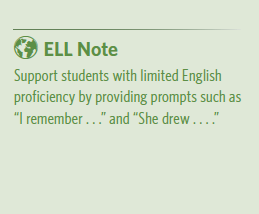
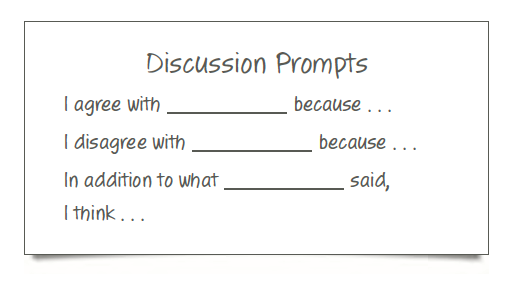
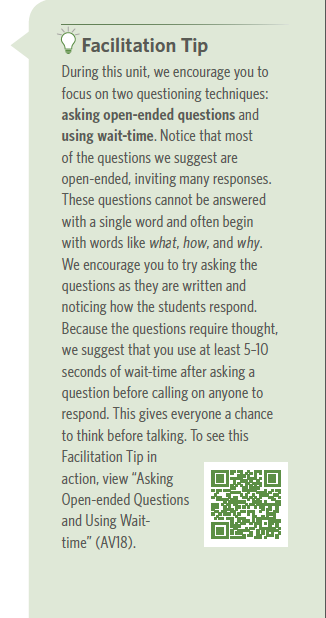
Collaborative Literacy offers seven facilitation techniques that enhance teaching and learning. This example is of the procedural scaffold of asking open-ended questions. This type of question requires students to think critically and go beyond simple answers. Because responding to open-ended questions may be challenging for ELL students, lessons include layered support. The first support is a list of general discussion prompts that are supportive for all students as they collaborate and add to each other’s thinking. For students at different proficiency levels, additional language support is offered in an ELL Note.
Explicit pre-teaching and modeling
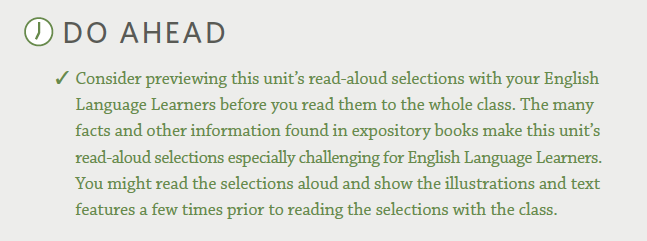
The “Do Ahead” section is a support for weekly planning. Considerations for supporting ELL students are included in this section when appropriate. In this example, the Do Ahead suggests that the teacher preview the unit’s read-aloud selections with the ELL students before whole-class instruction. The preview can be a combination of reading the text, discussing the text, and/or discussing the illustrations. Furthermore, these suggestions might serve as a springboard for making instructional decisions about any additional support that might be needed. This support could include building specific background knowledge as needed so that the students can engage in the tasks at hand in the upcoming weeks.
__________________________
LEARN MORE
Supporting English Learners in the Classroom: An Interview with Dr. Marco Bravo
With English learners now making up the fastest-growing segment of the K–12 student population, an increasing number of elementary teachers are feeling the impact, oftentimes reporting that they feel inadequately prepared to effectively meet the needs of language learners in their own classrooms.
We had the pleasure of talking with Dr. Marco Bravo, Associate Dean for the School of Education and Counseling Psychology at Santa Clara University about the kinds of instructional strategies and scaffolds that are critical for English learners to gain access to academic content before they are able to speak English fluently.
